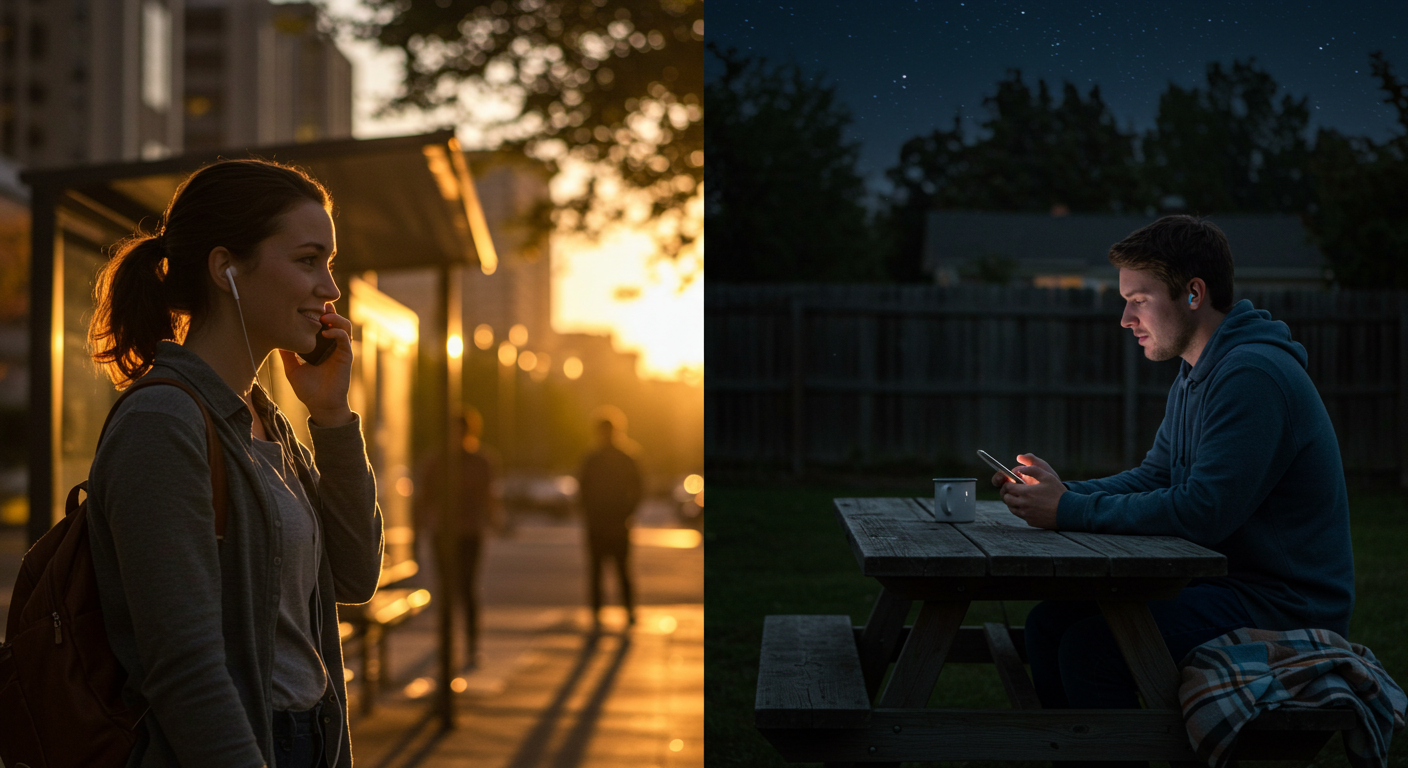Long Distance Dating: How to Make It Work Without Losing Your Mind

Long distance dating sounds romantic in theory—two people defying geography to keep love alive. But in reality? It’s late-night calls with bad Wi-Fi, mismatched time zones, and a constant ache that FaceTime can’t fix. No matter how strong your connection is, the physical distance tests everything: communication, trust, and emotional endurance.
Some people thrive in long distance relationships, using the space as a chance to build deep emotional intimacy. Others struggle with the gaps—both literal and metaphorical. It’s not that long distance dating is doomed, but it does demand more intention, clarity, and creativity than traditional relationships.
The good news? If both people are committed, it can work. The bad news? Love alone isn’t enough. You need strategies, emotional resilience, and a plan that goes beyond heart emojis and late-night texts.
This article dives into the real-life challenges of long distance dating—and how to navigate them without losing your connection (or your mind). Whether you’re starting a new LDR, stuck in one due to circumstance, or wondering if it’s worth the effort, here’s what it takes to survive the distance and come out stronger on the other side.
The Emotional Realities of Long Distance Dating
Long distance dating isn’t just about missing someone—it’s about learning to carry that longing while still functioning in everyday life. The emotional toll can be significant. You might feel lonely, insecure, or disconnected—even when everything is technically “fine.”
What makes it harder is the lack of physical presence. You can’t hug after a hard day. You can’t read each other’s body language during disagreements. You rely on texts, calls, and video chats to bridge the emotional gap, and sometimes, that just doesn’t feel like enough.
Then there’s the mental load. When your partner is far away, you have to think about how to stay connected. You schedule calls, manage time zones, and find ways to express love through a screen. That constant planning can feel exhausting.
Yet, this distance also creates space for emotional depth. Because you can’t rely on physical closeness, you’re forced to communicate more clearly, to listen better, and to articulate your needs. That can build trust and intimacy in powerful ways.
Still, it’s important to acknowledge that long distance dating is hard—and it’s okay to admit that. Romanticizing the challenge won’t help, but being honest about the emotional toll will prepare you for the work it takes to make it thrive.
Communication: Quality Over Quantity
In long distance dating, it’s tempting to stay connected 24/7—but that often leads to burnout, not bonding. Constant texting doesn’t guarantee closeness, and a daily video call can start to feel like an obligation rather than a joy.
Instead, focus on quality communication. That means making space for meaningful conversations rather than just filling silence. It’s about sharing more than your to-do list or what you ate for lunch. Talk about your goals, your fears, your hopes. Be curious about each other’s lives.
Set expectations early. Some couples prefer scheduled check-ins, while others go with the flow. The key is mutual understanding. Don’t assume that just because someone isn’t messaging constantly, they don’t care. People have different communication rhythms, and being long-distance amplifies every missed message.
Make use of voice notes, photos, and video messages. These add texture and warmth to your interactions. And when possible, avoid texting big emotional topics—go voice or video. Tone and nuance matter more when you can’t be physically present.
Ultimately, communication in long distance dating should feel like a lifeline, not a leash. It’s what keeps you emotionally tethered—but it works best when it’s thoughtful, intentional, and emotionally nourishing.
Building Trust Without Constant Contact
One of the biggest challenges in long distance dating is trust. When you can’t see what your partner’s doing or who they’re with, insecurity can creep in fast. You start overthinking unanswered texts or wondering why they didn’t call when they said they would. But trust isn’t about surveillance—it’s about belief.
Healthy trust is built on consistent behavior, not constant contact. If your partner does what they say they’ll do, shows up for scheduled chats, and communicates openly, that consistency creates emotional safety—even from afar.
Jealousy and anxiety are natural, especially if you’ve had past experiences with betrayal. But dragging those fears into your current relationship without checking them can create unnecessary friction. Talk about your boundaries, be clear about what respect looks like to you, and agree on how to handle social media, nights out, or new friends.
More importantly, trust your gut—but not your fear. If something feels off consistently, address it. But don’t let distance distort your perspective. A long distance relationship thrives on mutual confidence, not suspicion.
When both partners are emotionally available and intentional, trust becomes the glue that holds everything together—no GPS tracking required.
Creative Ways to Stay Emotionally Connected
When you’re in a long distance dating situation, creativity isn’t just cute—it’s essential. Emotional connection doesn’t happen automatically when you’re apart; it has to be actively built. Fortunately, there are countless ways to feel close, even when you’re miles away.
Try watching a show or movie together using a sync app, or have virtual dinner dates where you eat the same meal while video chatting. Share playlists that reflect your moods or send voice notes instead of texts—they’re more personal and let your tone and energy shine through.
Snail mail might sound outdated, but handwritten letters, surprise care packages, or small physical gifts can create intimacy in ways digital interactions can’t. A thoughtful note or keepsake you can hold carries emotional weight that transcends screen time.
Games, quizzes, and even journaling together can deepen emotional intimacy. Apps made for couples—like those that let you share calendars, goals, or messages—can keep your lives feeling intertwined even when you’re apart.
The point is this: staying connected long-distance doesn’t require grand gestures. It’s about intentional effort. When both partners commit to meaningful engagement, the emotional bond can feel even stronger than some in-person relationships.
How to Handle Time Zones, Schedules, and Space
Time zones don’t just complicate clocks—they complicate connection. Long distance dating across different cities (or continents) forces you to become a master of time management. But with the right mindset and a bit of structure, it’s possible to make it work without driving each other mad.
Start by being realistic. You won’t be able to talk at the same time every day, and that’s okay. What matters is finding small windows that work for both of you—even if that means one partner wakes up early and the other stays up a bit later a few times a week.
Google Calendars, shared schedules, and simple heads-ups like “I’m slammed today” go a long way. Nothing creates resentment faster than feeling ignored because someone didn’t manage expectations.
Respect for each other’s time is critical. Don’t expect instant replies or drop-in video chats if your partner’s day is packed. Build your relationship around mutual respect for space—not constant availability.
Having your own life is crucial. In fact, couples in long distance dating situations often find that maintaining strong individual routines and friendships helps the relationship thrive. You’re still two whole people, even if you’re in different time zones.
When Jealousy and Insecurity Creep In
Even the most confident person can feel rattled by distance. Jealousy and insecurity are common in long distance dating, especially when you’re not sure where you stand or what’s really going on. But those emotions, if unaddressed, can quickly poison trust.
The first step is to own what you’re feeling without shame. It’s normal to feel jealous when your partner goes to a party you can’t attend or when they don’t text back for hours. But instead of accusing or assuming, open a conversation.
Ask,
“Can we talk about how we handle time with friends?” or “I know this is my stuff, but I’m feeling a little anxious about _____.”
Vulnerability invites connection. Accusation only invites defense.
Revisit your boundaries and expectations regularly. Are you both still comfortable with how often you talk? Has anything changed that needs to be named? Communication isn’t a one-time setup in long distance dating—it’s a constant recalibration.
If jealousy becomes chronic or starts affecting your peace of mind, it may be a sign to reassess the relationship dynamic or do deeper self-reflection. Jealousy often signals unmet needs—addressing those head-on builds security and stops fear from running the show.
Planning Visits and the Importance of Future Goals
In long distance dating, planning your next visit isn’t just exciting—it’s vital. Knowing when you’ll see each other next adds emotional stability to the relationship. It turns “someday” into a specific date, and that transforms the longing into anticipation rather than anxiety.
Spontaneity is great, but long-distance love thrives on structure. Regular visits—whether monthly, quarterly, or tied to special occasions—help create rhythm and anchor the relationship in real-world experiences. These meetups act as checkpoints where physical connection, intimacy, and shared life experiences catch up to the emotional bond you’ve been building online.
But it’s not just about the next visit. It’s about the bigger plan. One of the most common reasons long distance relationships fail is a lack of a future timeline. Without a clear vision—Who’s moving? When? How will we make this permanent?—even the strongest bond can start to feel aimless.
That doesn’t mean you need a five-year plan on day one. But as things get more serious, so should your conversations. Long distance dating without a shared future is like running a race without a finish line—it’s exhausting, and eventually, someone will stop running.
Keep asking the hard questions. Is this leading somewhere? Are we still on the same page? If the answer’s yes, planning visits and long-term steps won’t feel like pressure—they’ll feel like progress.
When to Reevaluate: Is the Distance Still Worth It?
No one enters a long distance relationship hoping to stay long distance forever. There comes a point where every couple must ask the hard question: is this still working? And more importantly, is it still worth it?
Reevaluation doesn’t mean failure—it means maturity. As circumstances shift, so do emotional needs, priorities, and logistics. Maybe one of you gets a new job, starts feeling emotionally disconnected, or finds it harder to cope with the silence between visits. Those signals aren’t red flags—they’re invitations to reflect.
Be honest with yourself. Are you staying in the relationship out of love, or out of habit and fear of letting go? Are you both still putting in the effort, or is it becoming one-sided? Are your future plans aligned, or growing apart?
Sometimes, couples outgrow the distance. What once felt worth fighting for starts to feel like a weight. And sometimes, one or both partners simply don’t want to close the gap. That’s okay, but it has to be faced honestly.
If the answer is “Yes, it’s still worth it,” then reaffirm your commitment. Reinvest in the connection. But if the answer is no, don’t be afraid to step away with grace. Not every long distance love is meant to last—but every one teaches you more about what you truly need.
Conclusion: Long Distance Dating — Survive the Miles, Strengthen the Bond
Long distance dating isn’t for the faint of heart. It demands more communication, more patience, and more emotional strength than most relationships ever will. But for the right couple, the distance doesn’t dilute love—it distills it. It filters out distraction and tests your ability to stay connected not just in proximity, but in purpose.
What keeps it going isn’t luck or constant texting—it’s intentionality. It’s setting boundaries, making time for emotional connection, planning for the future, and checking in when things feel off. It’s understanding that emotional closeness doesn’t have to disappear just because someone isn’t physically there.
Long distance dating challenges you to communicate better, love deeper, and build something that doesn’t rely on everyday convenience. That kind of bond—one forged across miles—can be incredibly resilient.
But even if the relationship doesn’t last, long distance love teaches you things no casual fling ever could: how to express your needs, how to manage time apart, how to listen, how to trust, and how to choose someone again and again—even when it’s hard.
And that’s what makes it worth it. The miles test you—but they can also transform you.
My Go-To Platform for Flings, Affairs, and MILFs
Looking for top-notch flings, affairs, or MILFs? Skip the rest, AdultFriendFinder is the gold standard. Zero bots, zero fakes—just real connections. I've scored big in multiple cities. Sign up now, it's FREE!









